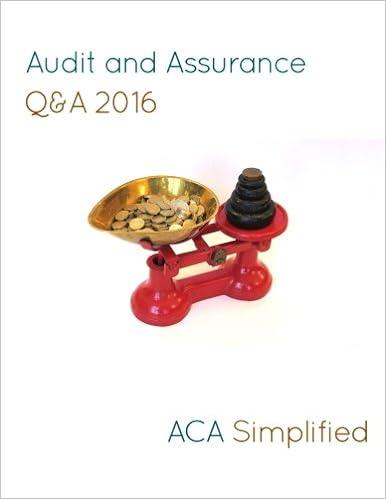

Consolidation at the end of the first year subsequent to date of acquisition-Equity method (purchase price equals book value) Assume that a parent company acquires its subsidiary on January 1, 2016, by exchanging 40,000 shares of its $1 par value Common Stock, with a market value on the acquisition date of $27 per share, for all of the outstanding voting shares of the acquiree. You have been charged with preparing the consolidation of these two companies at the end of the first year. On the acquisition date, all of the subsidiary's assets and liabilities had fair values equaling their book values. Following are financial statements of the parent and its subsidiary for the year ended December 31, 2016. Parent Subsidiary Parent Subsidiary Income statement Balance sheet Sales $ 2.960,000 $1,675,000 Assets Cost of goods sold (2,072,000) (1,008,000) Cash $ 696,920 $ 432,880 Gross profit 888,000 667,000 Accounts receivable 378,880 349,760 Equity income 230,200 Inventory 574,240 500,640 Operating expenses (562,400) (436,800) Equity investment 1,279,920 Net income $ 555,800 $ 230,200 Property, plant & equipment 2,170,240 926,240 Statement of retained earnings $5,100,200 $ 2,209,520 BOY retained earnings 1,881,600 868,000 Liabilities and stockholders' equity Net income 555,800 230,200 Accounts payable $216,640 $ 160,160 Dividends (112,160) (30,280) Accrued liabilities 257,520 209,440 Ending retained earnings $ 2,325,240 $ 1,067,920 Long-term liabilities 560,000 Common stock 112,000 APIC 1,886,400 100,000 Retained earnings 2,325,240 1,067,920 $ 5,100,200 $ 2,209,520 414,400 d. Prepare the consolidated spreadsheet for the year ended December 31, 2016. Use negative signs with answers in the Consolidated column for reductions (Cost of goods sold, Operating expenses and Dividends). Consolidation Worksheet Parent Subsidiary Dr Cr Consolidated Income statement: Sales $2,960,000 $1,675,000 $ 4,635,000 Cost of goods sold (2,072,000) (1,008,000) (3,080,000) Gross profit 888,000 667,000 1,555,000 Equity income 230,200 [C] 230,200 0 Operating expenses (562,400) (436,800) (999,200) Net income $555,800 $230,200 $ 555,800 Statement of retained earnings: BOY retained earnings $1,881,600 $868,000 [E] 868,000 $ 1,881,600 Net income 555,800 230,200 555,800 Dividends (112,160) (30,280) 30,280 C 112,160 X Ending retained earnings $2.325,240 $1,067,920 $ 2.325,240 Balance sheet: Assets Cash $696,920 $432,880 $ 1,129,800 Accounts receivable 378,880 349,760 728,640 Inventory 574,240 500,640 1,074,880 Equity investment 1,279,920 199,920 [C] 0 1,080,000[E] Property, plant and equipment (PPE), net 2,170,240 926,240 3,096,840 X $5,100,200 $2,209,520 $ 6,029,800 Liabilities and stockholders' equity Accounts payable $216,640 $160,160 $ 376,800 Accrued liabilities 257,520 209,440 466,960 Long-term liabilities 560,000 560,000 Common stock 414,400 112,000 [E] 112,000 414,400 APIC 1,886,400 100,000 [E] 100,000 1,886,400 Retained earnings 2.325,240 1,067,920 2.325,240 $5,100,200 $2,209,520 Ox $ 0 x $ 6,029,800 Check








